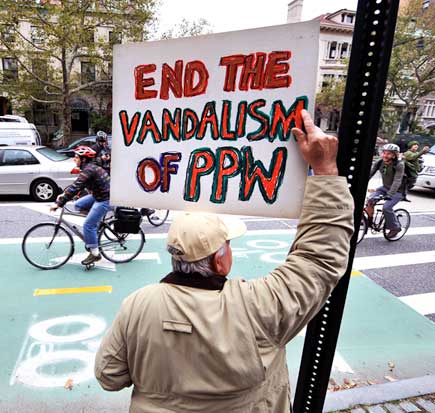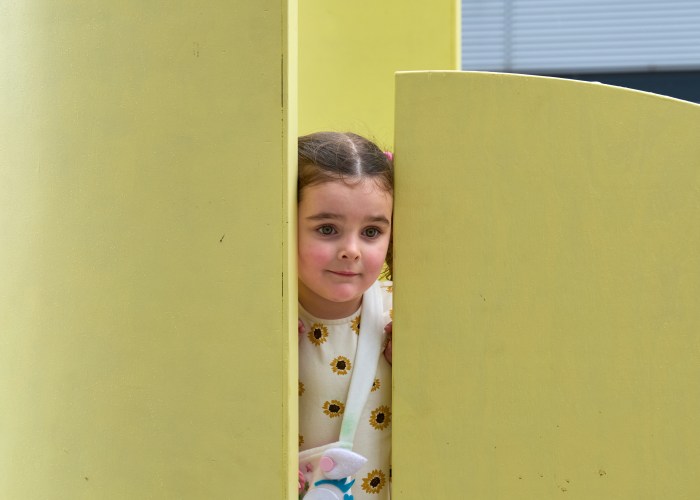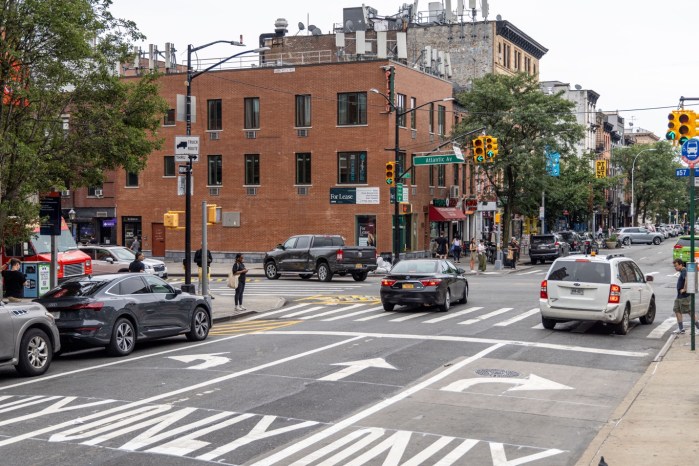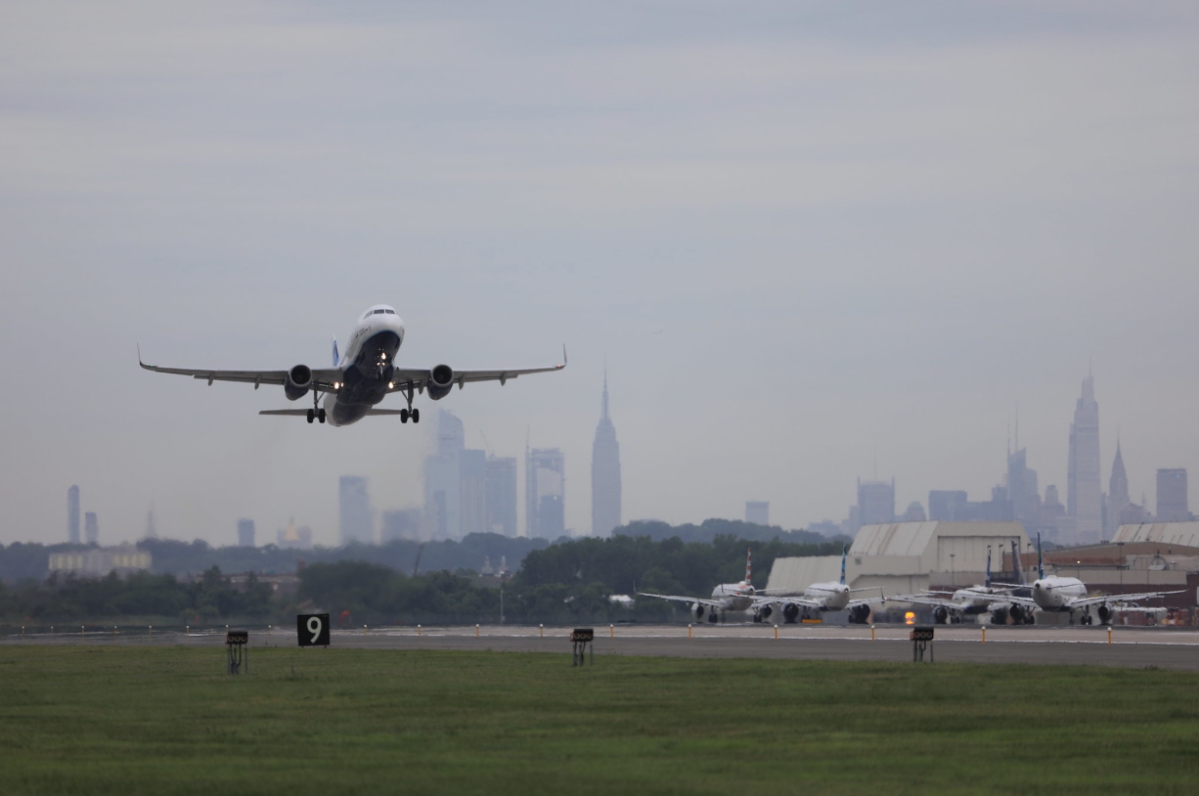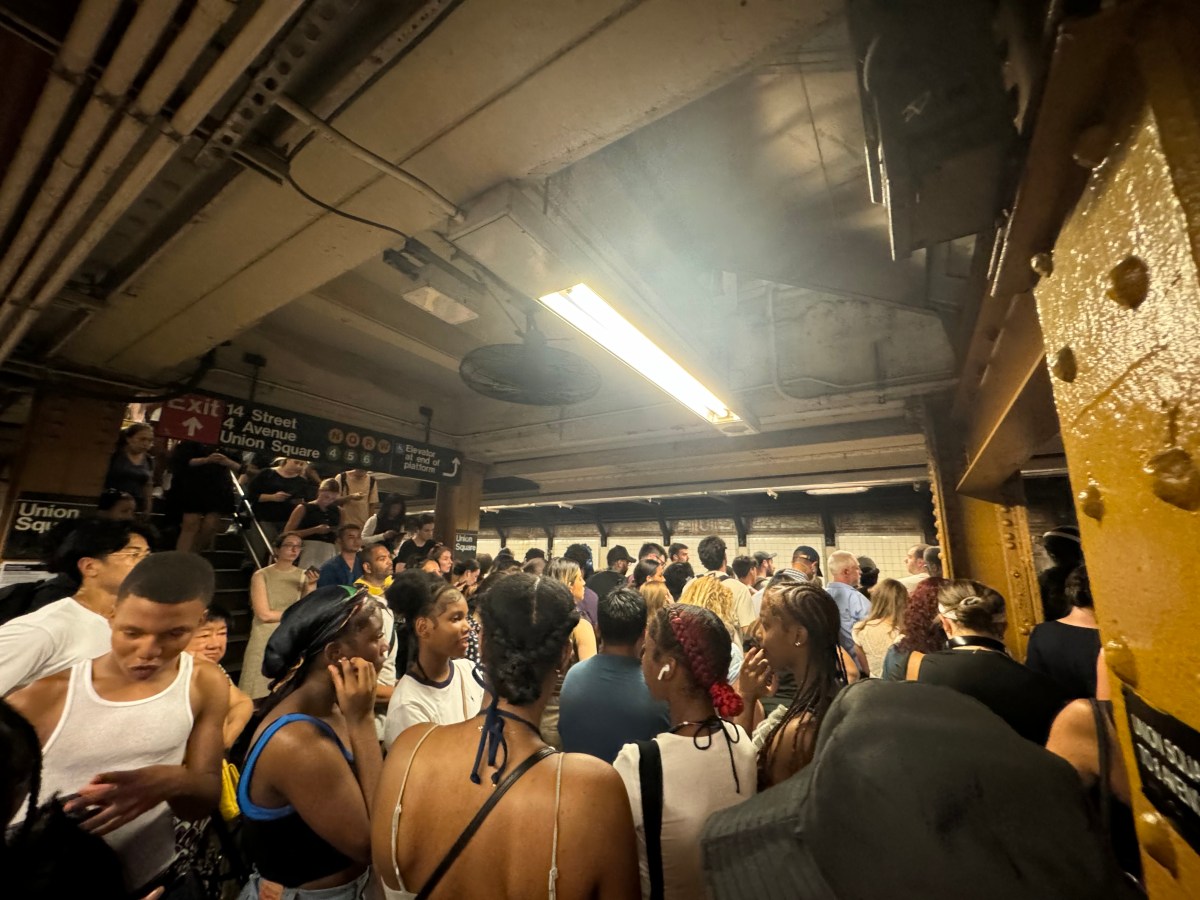The city threw pedestrians into the “lane” of fire by fudging Prospect Park West bike path data and colluding with rabid advocates to stanch opposition, a bombshell lawsuit alleges.
Neighbors for Better Bike Lanes and Seniors for Safety, two groups that oppose the lane, filed a lawsuit on Monday in Brooklyn Supreme Court, claiming that the “experimental” project has created dangerously “inconsistent traffic patterns” and “limited visibility” for everyone on the busy street.
The lawsuit demands that the lane be dismantled and calls for a truly independent study of traffic and safety conditions along the roadway.
“[The city] promised a thorough and objective study, and instead we got a coordinated effort to mislead the public and openly attack people concerned about safety conditions,” said Seniors for Safety President Lois Carswell.
Court documents paint a cozy relationship between lane supporters and Ryan Russo, the Department of Transportation’s assistant commissioner for traffic management — an official responsible for “interpreting and presenting the … misleading and skewed data,” according to court papers.
Last June, the group discovered through the Freedom of Information Act, that Russo told bike blogger Aaron Naparstek that the lane was “under serious attack [from] important people talking to other important people.”
The reference to “important people” is to former Transportation Commissioner Iris Weinshall and former Sanitation Commissioner Norman Steisel, who are both part of the opposition.
Russo told Naparstek that their anti-bike–lane efforts needed “neutralizing.” After Naparstek called lane the opponents “shameless, selfish pigs,” Russo wrote, “That’s quite enjoyable.”
The lane foes’ lawyer called the exchange “the tip of the iceberg.”
“The serious misconduct of these Transportation officials is a breach of the public trust and deserves further investigation and sanction,” said the lawyer, Jim Walden, who has contributed to the election campaigns of Sen. Charles Schumer — the bike-loving lawmaker who is married to Weinshall.
Department of Transportation officials would not comment specifically about the e-mail exchange, but said it has been in conversation with both sides of the issue.
“We always talk to supporters and to opponents to get the facts out on an issue and to advocate for policies we believe can best serve the city,” spokesman Seth Solomonow said. “The record here clearly shows that we spoke with people on all sides of this topic. We provided data to the community board earlier this year and categorically reject any claim that it is inaccurate.”
Lane supporters fired back on Tuesday, rallying at City Hall to decry the lawsuit as meritless and herald the lane as a driving factor behind a drastic, 63-percent reduction in accidents along the grand boulevard.
“Everyone is entitled to their opinion, but I believe this lawsuit disregards the opinions and jeopardizes the safety of the community,” said Councilman Brad Lander (D–Park Slope).
Some seniors for safety were on hand — to cheer the lane.
“I use the bike lane whenever I get the opportunity,” said Gene Aronowitz, 73. “Aren’t I entitled to be safe as I ride the streets?”
Lane backers added that there is no evidence to show that the city acted in an arbitrary or capricious manner.
“In fact, there’s plenty of evidence to the contrary,” said Gary Reilly, a Carroll Gardens resident and lawyer.
The city originally pitched the controversial two-way lane in 2009 as a traffic-calming measure that would reduce speeding on the hectic throughway. But backers pointed out that as far back as 2007, CB6 petitioned the city to install the protected path as a way to slow speeding traffic.
Despite opposition, the lane was painted last spring, and the Department of Transportation has consistently trumpeted it as a success, presenting data that shows fewer cars now speed, fewer bicyclists use the sidewalk and fewer cyclists get into accidents.
The city is moving to dress up the lane, and plans to add an array of safety measures, raised pedestrian islands and rumble strips, alerting cyclists to yield. New trees are also being contemplated. On Thursday night, CB6 was set to weigh the changes, which could be implemented this spring.
Critics, such as former deputy mayor Norman Steisel, said the measures are akin to putting lipstick on a pig.
”You’re talking about physical and cosmetic improvements,” he said. “My problem is fundamentally with the current lane configuration.”
Community Board 6 will discuss the enhancements at the John Jay HS [237 Seventh Avenue between Fourth and Fifth streets in Park Slope, (718) 643-3027], March 10 at 6:30 pm.


